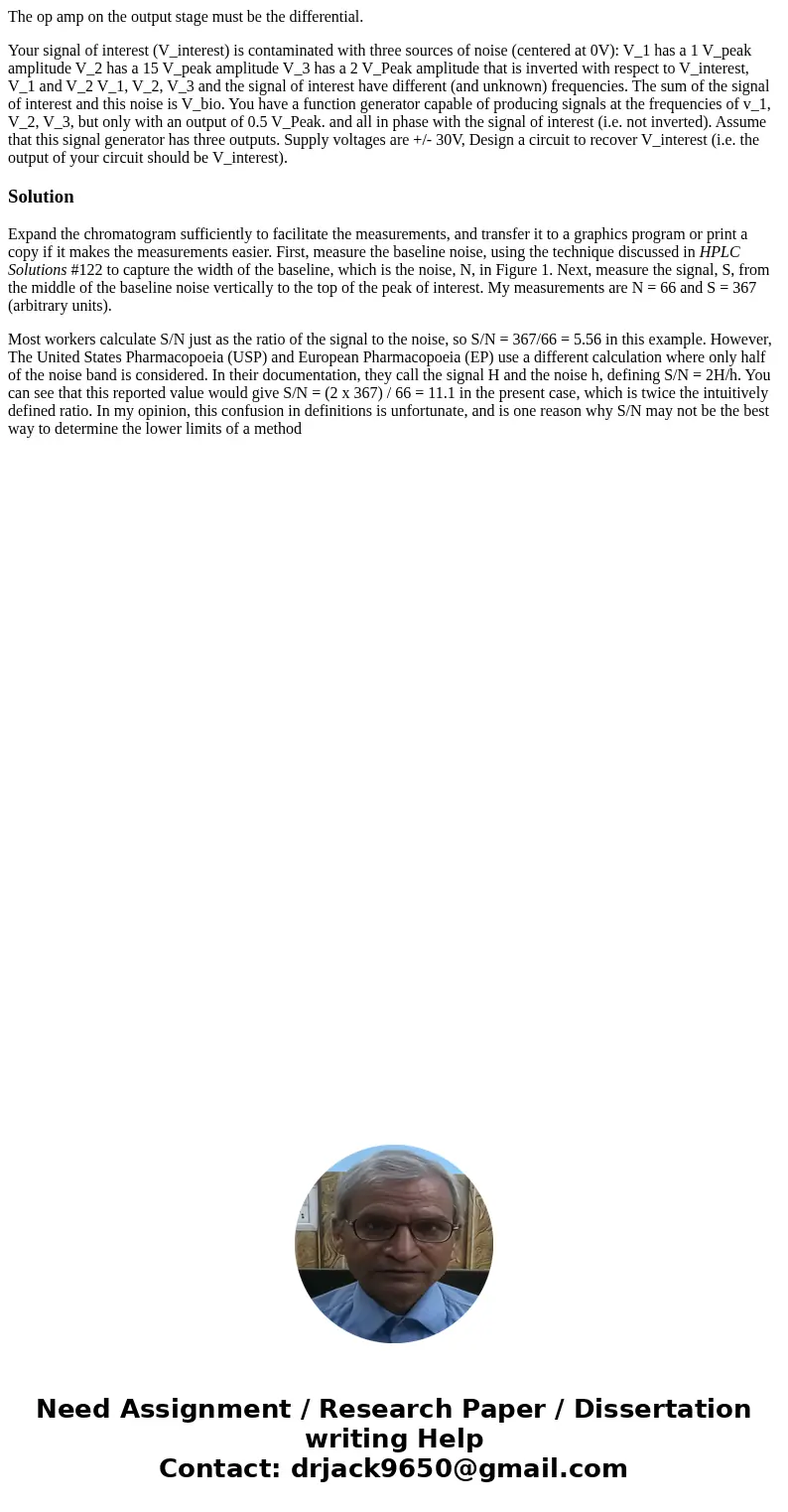The op amp on the output stage must be the differential Your
The op amp on the output stage must be the differential.
Your signal of interest (V_interest) is contaminated with three sources of noise (centered at 0V): V_1 has a 1 V_peak amplitude V_2 has a 15 V_peak amplitude V_3 has a 2 V_Peak amplitude that is inverted with respect to V_interest, V_1 and V_2 V_1, V_2, V_3 and the signal of interest have different (and unknown) frequencies. The sum of the signal of interest and this noise is V_bio. You have a function generator capable of producing signals at the frequencies of v_1, V_2, V_3, but only with an output of 0.5 V_Peak. and all in phase with the signal of interest (i.e. not inverted). Assume that this signal generator has three outputs. Supply voltages are +/- 30V, Design a circuit to recover V_interest (i.e. the output of your circuit should be V_interest).Solution
Expand the chromatogram sufficiently to facilitate the measurements, and transfer it to a graphics program or print a copy if it makes the measurements easier. First, measure the baseline noise, using the technique discussed in HPLC Solutions #122 to capture the width of the baseline, which is the noise, N, in Figure 1. Next, measure the signal, S, from the middle of the baseline noise vertically to the top of the peak of interest. My measurements are N = 66 and S = 367 (arbitrary units).
Most workers calculate S/N just as the ratio of the signal to the noise, so S/N = 367/66 = 5.56 in this example. However, The United States Pharmacopoeia (USP) and European Pharmacopoeia (EP) use a different calculation where only half of the noise band is considered. In their documentation, they call the signal H and the noise h, defining S/N = 2H/h. You can see that this reported value would give S/N = (2 x 367) / 66 = 11.1 in the present case, which is twice the intuitively defined ratio. In my opinion, this confusion in definitions is unfortunate, and is one reason why S/N may not be the best way to determine the lower limits of a method

 Homework Sourse
Homework Sourse